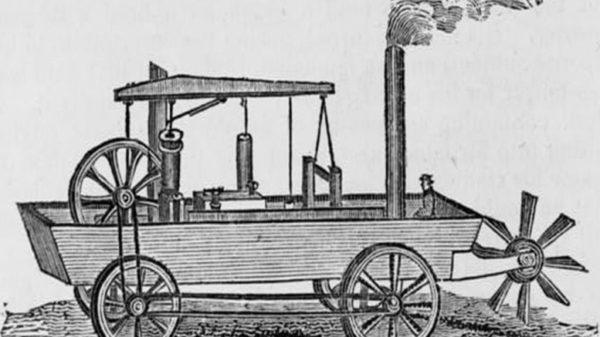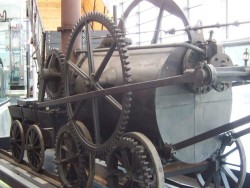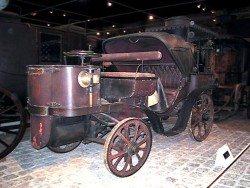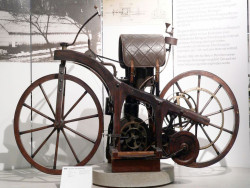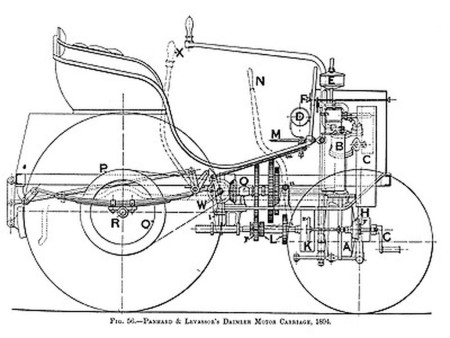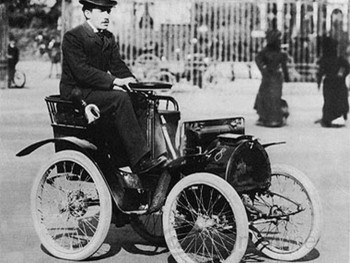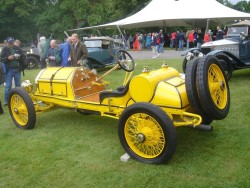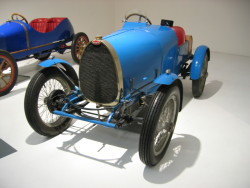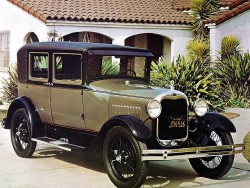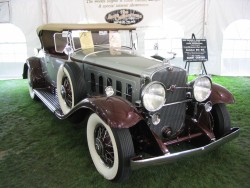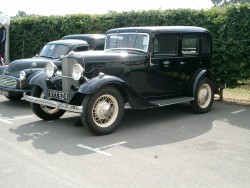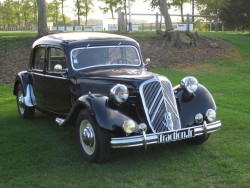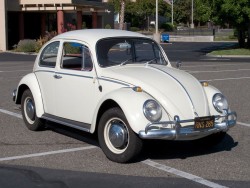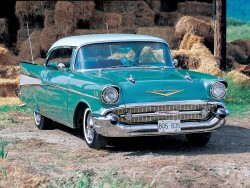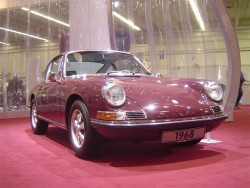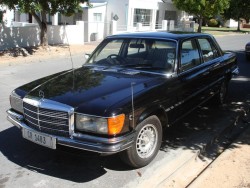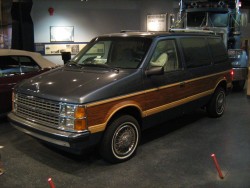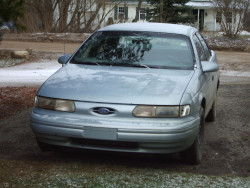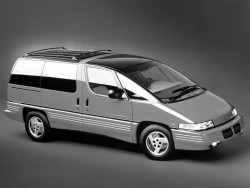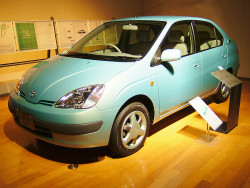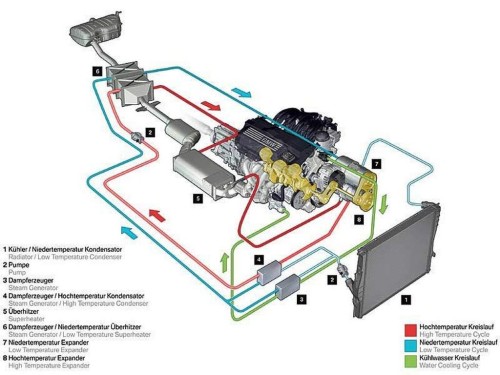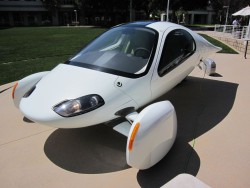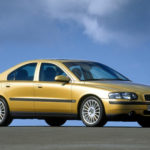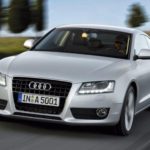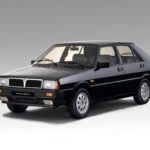Car History
Introduction
The history of automobiles began as early as 1769 with the creation of a pair of powered vehicles capable of carrying freight and people. In 1806, the first vehicles powered by an internal combustion engine powered by gas fuel appeared, which in 1885 led to the introduction of the ubiquitous modern gasoline or diesel internal combustion engine. Electric-powered cars appeared briefly at the turn of the XNUMXth century, having disappeared from use by the end of the XNUMXth century, but have resurfaced at the beginning of the XNUMXst century. The early history of a car can be divided into several stages based on the prevailing drive modes and fuel type. Subsequent periods of car development are defined by trends in appearance, car size and fuel economy.
The first cars
Ferdinand Verbiest a member of the Jesuit mission to China made the first steam-powered vehicle in 1672 as a gift toy for the Chinese emperor. The vehicle was small enough that it could not be manually operated, but remained in history as the first steam-powered vehicle.
Self-propelled steam vehicles large enough to carry people and cargo were first designed at the end of the eighteenth century. Frenchman Nicolas-Joseph Cugnot demonstrated his vehicle under the name Fardier à vapeur (steam-powered freight car), an experimental steam-powered artillery tractor from 1770-71. years. As the design of this vehicle proved impractical his invention was not further developed in his native France. The Innovation Center has been moved to the UK. In 1784 William Murdoch built a working vehicle on a freight steamer in Redruth township, and in 1801 Richard Trevithick constructed and transported a full-size steamer on the streets of Camborne.
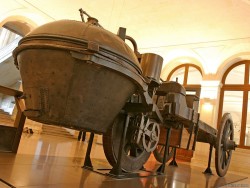
Such vehicles have been in vogue and over the next few decades, innovations such as the handbrake, gearshift and various steering mechanisms have evolved rapidly. Some vehicles were commercially successful through the provision of mass transport of people and cargo until the so-called high-speed vehicles of the time were adopted. Locomotive Act in 1865, a law that required a man waving a red flag and blowing a horn in front of self-propelled vehicles on public roads in the United Kingdom to warn pedestrians. This kind of law definitely stopped the development of cars in the UK by the end of the nineteenth century, so inventors and engineers shifted their efforts to improve the development of railway locomotives and rail transport. The law was not repealed until 1896, though the need to wave a red flag was eliminated in 1878. The first automobile patent in the United States was filed by Oliver Evans in 1789, as he envisioned it, as illustrated by the first photograph.
After great efforts in 1815, Professor Josef Bozek from the Prague Polytechnic Academy made a car powered by oil vapor. Walter Hancock, a builder and driver of London steam buses, constructed in 1838 an open four-seater steam-powered car. What some people define as the first "real" car was produced by the French designer Amédée Bollée in 1873. He made a self-propelled steam vehicle to transport passengers.
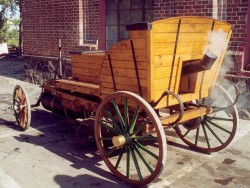
American George B. Selden filed for a similar patent on May 8, 1879. His patent contained not only an engine but also a complete four-wheeled vehicle. Selden filed a series of amendments to his patent application, which departed from the legal process, resulting in a delay of 16 years before US patent 549160 was granted November 5, 1895. German Karl Benz, the inventor of many related automotive technologies, was granted his car patent in 1886. The four-stroke internal combustion engine, which is the most common form of modern automotive propulsion, was created by Nikolaus Otto. A similar four-stroke diesel engine was invented by Rudolf Diesel. A hydrogen fuel cell, one of the technologies celebrated as a replacement for gasoline as an energy source for the engine, was discovered by Christian Friedrich Schönbein in 1838. The battery-powered electric car owes its origins to Ányos Jedlik one of. the inventor of electric motors and Gaston Planté the inventor of the 1859 lead battery.
The first freight car suitable for use on U.S. roads at the time was a steam vehicle invented in 1871 by Dr. JW Carhart, a member of the Methodist Episcopal Church of Racine, Wisconsin. This determined the state of Wisconsin in 1875 to offer a reward of $ 10.000 to one who produces a practical substitute for the use of horses and other animals for towing. It is stipulated that the vehicle must maintain an average speed of five kilometers per hour on a 200-mile (320 kilometers) road. The offer led to the first organized long-distance car race in the United States on July 16, 1878, between Green Bay and Madison, Wisconsin. The race route ran through Appleton, Oshkosh, Waupun, Watertown, Fort Atkinson and Janesville. Although seven vehicles were reported, one from each place, only two were registered for the race: vehicles from Green Bay and Oshkosh. The vehicle from Green Bay was faster but fell apart before the race ended. The Oshkosh vehicle completed the 200-mile race in 33 hours and 27 minutes with an average speed of six kilometers per hour. The winner received only half the prize next year for the race winner.
Steam-powered cars continued their development until the early twentieth century, but the proliferation of gasoline engines as the main drive of choice in the nineteenth century marked their end. Whether such an idea will ever be born in future technological epochs remains to be seen. In the 1950s, there was an interest in building steam powered cars obtained by cooling small nuclear reactors, but the dangers inherent in nuclear technologies soon dispelled this idea. The need for global change due to the consumption of energy sources along with ideas and solutions on sustainability and energy independence has led 1828st century engineers to rethink potential uses of steam even if the energy of modern energy sources is controlled, such as advanced electric batteries, fuel cells , biofuels or other. In 1834, Ányos Jedlik, a Hungarian who invented the first version of an electric motor, made a small model of a car powered by its own electric motor. A blacksmith from Vermont, USA, Thomas Davenport, the inventor of the first American DC electric motor, installed his own engine in 1835 in a small car that worked on a short circular electrified track. In 1838, Professor Sibrandus Stratingh, of Groningen, the Netherlands, and his assistant, Christopher Becker, create a small electric car powered by uncharged fuel cells. In 1840, Scott David Davidson made an electric locomotive that reached speeds of six kilometers per hour. In England, an 1847 patent was granted relating to the use of a railroad as an electrical conductor, similar to the US patents issued to Lilley and Colten in 1832. Between 1839 and XNUMX, Robert Anderson of Scotland invented the first electric open carriage driven by uncharged fuel cells.
The first attempts to produce and use internal combustion engines were hampered by the lack of suitable fuels, especially liquid ones, so that such earliest engines used gas mixtures as propellant. In 1806, the Swiss engineer François Isaac de Rivaz built an engine that started the internal combustion of a mixture of hydrogen and oxygen. In 1826, the Englishman Samuel Brawn tested his internal combustion engine, which used hydrogen fuel to power a vehicle he had climbed on Shooters Hill in south-east London. In 1860, the Belgian Etienne Lenoir invented the so-called Hyppomobile with a single-cylinder hydrogen-powered internal combustion engine that made a test drive from Paris to Joinville-le-Pont in 1860 in a length of nine kilometers that lasted about three hours. A later version of the car was launched on the so-called. mining gas. The Delamare-Deboutteville car was patented and tested during 1884. In Vienna, then Austro-Hungary, in 1870, the inventor Siegfried Marcus installed a gasoline-powered internal combustion engine on a wheelchair, making him the first man to start a vehicle with a gasoline engine. Today, this car is known as "Marcus' first car". In 1883, Marcus obtained a German patent for a low-voltage magnetic ignition system, which was his only automobile patent. He used this design on all other engines as well as on the next four-seater car called the "second Marcus car" of 1888/89. years. This kind of engine ignition in cooperation with the so-called a rotating carburetor made another Marcus car a very innovative vehicle. It is generally accepted that the first practical cars with a gasoline internal combustion engine were made almost simultaneously by several German inventors who worked independently and independently of each other. Karl Benz made his first car in 1885 in Mannheim. Benz received a patent for his car on January 29, 1886, and began first production of the car in 1888, after Bertha Benz, his wife, proved that a horse-drawn vehicle was absolutely suitable for everyday use with the first long drive in August 1888. years from Mannheim to Pforzheim and back. Shortly afterwards, Gottlieb Daimler and Wilhelm Maybach designed the first real car of their own design in Stuttgart in 1889, without it being a horse-drawn carriage equipped with an engine. They are also credited with the invention of the first motorcycle in 1886.
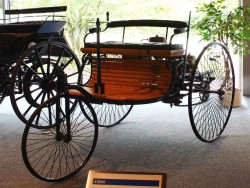
However, in 1882, Italian Enrico Bernardi of the University of Padua patented a 0,024 horsepower and 122 cm single-cylinder diesel engine.3 volume by placing it on his son's tricycle, making him the first candidate to find his first car and motorcycle. Bernardi increased the tricycle in 1892 with the ability to carry two adults. One of the first four-wheel-drive diesel cars in the UK was made in Birmingham in 1895 by Frederick William Lanchester, who also patented the first disc brake. He installed the first electric motor starter on a car called Arnold, an adaptation of the Benz Velo car between 1895 and 1898. Due to various world turmoil, many early automobile pioneers are almost completely forgotten. In 1891 John William Lambert built a three-wheeled vehicle in Ohio City, Ohio, which was destroyed in a fire that same year, while Henry Nadig constructed a four-wheeled car in Allentown, Pennsylvania. These were probably not the only unfairly forgotten automobile inventors.
Age of veterans
The first car production began in 1888 in Germany with Karl Benz and in France by Emile Roger under the license of Benz. In those years, many others appeared, including tricycle builders Rudolf Egg, Edward Butler, and Léon Bollée. Bollée, using a built-in 650cc engine of its own design, allows its driver Jamin to achieve an average speed of 45 kilometers per hour in 1897 at the Paris-Tourville race. By 1900, mass production of cars began in France and the United States. The first company formed exclusively for the manufacture of automobiles was Panhard et Levassor in France, where the first four-cylinder internal combustion engine was also introduced for the first time. Panhard was founded in 1889, followed shortly by Peugeot two years later.
By the beginning of the twentieth century, the automotive industry had begun to take off in Western Europe, especially in France, where 30.204 pieces of car were produced in 1903, representing 48,8 percent of the world's then automobile production. In the US, the brothers Charles and Frank Duryea founded the Duryea Motor Wagon Company in 1893, becoming the first American automotive manufacturing company. However, back then, Ransom E. Olds and his Olds Motor Vehicle Company (later known as Oldsmobile) dominated the early era of automotive manufacturing. Its production line was started in 1902. The American Thomas B. Jeffery Company developed the mass production of another car model by producing and selling 1.500 Rambler models in its first year of operation, representing one-sixth of all existing passenger cars in the US at that time. Within a year, Cadilac (formed by the Henry Ford Company), Winton and Ford also began producing thousands of cars annually.
Over the next few years, the range of automotive technologies produced by hundreds of manufacturers around the Western world skyrocketed. Steam, electric and diesel-petrol cars have been competing for decades with gasoline engines with internal combustion, gaining dominance at the beginning of the 1898th century. Cars with two or even four engines were designed, and the engine volume increased to more than ten liters. Many of the then modern solutions including gas or electric hybrids, multi-valve engines, double camshafts and all-wheel drive were rejected by vehicle manufacturers. In XNUMX, Louis Renault installed a modified De Dion-Bouton engine with a fixed cardan shaft and a Pinion ring gearbox to create "perhaps the first hot car model in history", introducing himself and his Renault brothers to the automotive industry. The innovation was quickly implemented without clear standards for basic vehicle architecture, design styles, embedded material or control.
Many cars of the period used a wooden handle rather than a steering wheel. During 1903, the Rambler model had a standardized steering wheel, thus shifting the driver's position to the left side of the vehicle. Most cars moved using only one speed. Chain power transmission was dominant over the drive shaft, and closed cars were extremely rare. Drum brakes were introduced by Renault 1902. The following year, Dutch designer Jacobus Spijker makes the first all-wheel-drive race car that has never competed.
This remained the case until 1965, when the English model Jensen FF appeared, the first car with such a drive to be used in mass production of cars. The innovations were not limited to the vehicles themselves, but also caused other changes. The increase in the number of cars is driving the growth of the oil industry as well as the development of technology for the production of gasoline (replacing kerosene and coal oil) with improvements to lubricants and mineral oils (as a substitute for animal and grain oils) resistant to heat. The appearance of cars in people's daily lives also caused certain social effects. Music tracks about cars such as "In My Merry Oldsmobile" appeared, and in 1896 William Jennings Bryan became the first American presidential candidate to use a car (a gift from Mueller) in Decatur, Illinois. Three years later, a certain Jacob German began the tradition of New York City Cabdriver (New York taxi drivers) when he drove along Lexington Avenue at a "negligent" speed of 19 km / h. Also, in 1899, in Akron, Ohio, the first self-propelled police vehicle appeared to transport prisoners, the so-called Paddy wagon.
Since 1900, there has been talk of national automotive industries in many countries around the world including Belgium (Vincke, a Benz copier manufacturer; Germain as a pseudo-Panhard automaker; Linon and Nagant, both based on Gobron-Brillié models), Switzerland ( led by manufacturers such as Fritz Henriod, Rudolf Egg, Saurer, Johann Weber and Lorenz Popp), Vagnfabrik AB in Sweden, Hammel (after AF Hammel and HU Johansen of Copenhagen, Denmark, who only produced one car in 1886). Irgens (started in Bergen, Norway in 1883, but without success), Italy (where FIAT started operating in 1899) as well as in faraway Australia (where Pioneer opened a car dealership in 1898 with already an archaic paraffin driven cargo vehicle). In the meantime, car exports began their global growth with the first Koch derived cars and trucks from France to Tunisia, Egypt, Iran as well as to the then Netherlands East Indies. On November 5, 1895, George B. Selden received a U.S. patent for a two-stroke car engine (U.S. Patent 549160). He did that patent more as a hindrance than as a driver of U.S. car development. Selden licenses its patent with most major U.S. carmakers, collecting cash on every car manufactured.
The Studebaker brothers, after becoming the world's leading manufacturers of horse-drawn vehicles, made the transition to electric cars in 1902 and gasoline engines in 1904, continuing the construction of horse-drawn vehicles until 1919. In 1908, the first South American car was made in Peru under the name Grieve. Motor vehicles were also exported to the British colonies very early on, so that the first motor car appeared in 1897 in India. During this period of development, cars were seen more as a novelty than a truly useful everyday device. Breakdowns were common, fuel was difficult to obtain, commuting was scarce, and rapid innovations meant that a one-year-old car was quickly becoming virtually worthless. The major shift in proving the usefulness of the car came from the historic Bertha-Benz drive in 1888 when it traveled more than 80 kilometers from Mannheim to Pforzheim to make people aware of the potential of the vehicle produced by her husband, Karl Benz. His cars became world-renowned only when Horatio Nelson Jackson successfully completed a transcontinental ride across the United States in 1903. While some manufacturers supplied vehicles with tire repair kit, the Rambler manufacturer was the first to equip their cars in 1909 with a spare tire that was mounted on the back of the car.
Named for the widespread use of brass in the United States, the so-called Mesingano or Edwardian era lasted from 1905 to the outbreak of World War I in 1914. Within 15 years, various experimental designs and alternative drive systems will be completely marginalized. Although modern passenger cars of the time were invented earlier, there were not many of them on the roads until Panhard-Levassor's so-called. Système Panhard was not widely licensed and adopted so that recognizable and standardized cars were finally created. This kind of automotive system features a pre-set internal combustion engine and sends the drive to the rear axle (s) via a sliding gear system. By 1906 the development of steam cars had made great progress and they were among the fastest road vehicles of the period. During this period, automotive technology developed rapidly thanks to hundreds of small manufacturers who competed to get the attention of the rest of the world. Key inventions were an electrical ignition system (via a dynamometer on an Arnold model in 1898 to the Robert Bosch patent of 1903 that is still in use today), independent suspension of the vehicle (actually designed by Bollee in 1873), and four-wheel brake systems (based on the 1909 idea of the Arrol-Johnston Company of Scotland). Leaf springs were widely used for car suspension, although many other systems were still in use with hard steel and reinforced wood materials. Gearbox and acceleration / deceleration controls have been widely adopted allowing for various cruise speeds for cars, though vehicles generally still had a discreetly tuned gearshift system, rather than the variable system known in cars of later epochs. Safety glass on car windows also appeared during this period patented by John Wood in England in 1905, though it became standard on the car in 1926 on the Rickenbacker.
Between 1907 and 1912 in the US, the High-wheel Motor Buggy was at its zenith with over seventy-five manufacturers, including Holsman (Chicago), IHC (Chicago) and Sears (which sold cars through the catalog). This type of vehicle will be replaced by the timeless Ford Model T. In 1912, Hupp in the US and BSA in the UK became pioneers in using the complete steel body of the car, and in 1924 they were joined by Dodge producing the body for the Ford Model T. Although two more would pass. decades before the use of the complete steel body of the car as a standard of change contributed to the decline in the stock of quality wood that began to be used in furniture making.
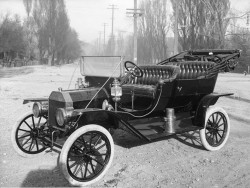
Some examples of the most famous cars of the period are:
1908 - 1927 Ford Model T - the most commonly produced and sold car in this period. He used the so-called planetary transmission system and had a pedal-based speed control system. The Ford T has been named the most influential car of the XNUMXth century in almost all international car elections.
1910 - 1922 Mercer Raceabout - is considered one of the first sports cars. The Raceabout captivated the public eye thanks to its distinctly sporty ride in a similar way as the American and Hispano-Suiza Alphonso models later did.
1910 - 1920 Bugatti Type 13 - the most significant racing model of the time with advanced engineering and design solutions. Similar models were later the Bugatti Type 15, 17, 22, and 23.
The popular era
This period lasted from the end of World War I in 1918 to the onset of the Great Crisis and the stock market crash on Wall Street in 1929. During this period, cars with front-mounted engines with closed passenger cabs and standard steering controls begin to dominate. In 1919, as many as 90 percent of the cars sold were open, and by 1929, 90 percent of the cars sold had a closed cabin. The development of internal combustion engines continued at a rapid pace, with the emergence of multi-valve and camshaft engines of high quality engines, including V8, V12 and even V16 engines made for the ultra-rich clientele. In those years, hydraulic brakes were invented by Malcolm Loughead, first applied by Duesenberg for his 1921 Model A. Three years later Hermann Rieseler of the Vulcan Motor Company invented the first automatic transmission that had two so-called. planetary gearbox, torque converter and clutch lock. This gearbox never went into series production, leaving it only as an option available to automakers until 1940. At the end of this period, tempered glass appeared now as standard equipment on side windows, and was invented in France. In this era, the revolutionary so-called pontoon car design without articulated fenders, car climbing thresholds and other non-compact elements used in small batches, but the mass production of cars designed in this way began much later after World War II.
Examples of the most significant cars from this period are:
1922 - 1939 Austin 7 - This was one of the most copied cars ever to serve as a starting point for various car manufacturers around the world from BMW to Nissan.
1922. - 1931. lancia lambda - a very advanced car during this time, the first car characterized by the so-called. monocoque bearing independent body and front suspension.
1924 - 1929 The Bugatti Type 35 - Type 35 was one of the most successful racing cars of all time with more than 1.000 wins in five years of competition.
1925 - 1928 Hanomag 2/10 PS - an early example of the successful so-called pontoon of design and style.
1927. - 1931. Ford Model A - After keeping Model Ta in production for too long, Ford has come out of the past with the production of the new Model A since 1927. More than 4 million manufactured cars make it the best-selling model of the period. Ford A was the prototype of the beginning of mass production of cars in the USSR as a model GAZ A.
1930 - 1937 Cadillac V-16 - Manufactured in the midst of a car development in the 30s, this V16 engine joined the Bugatti Royale as one of the legendary ultra-luxury cars of the era.
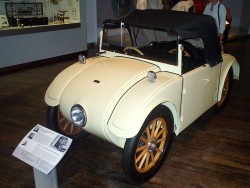
The pre-war era
The pre-war era of classic motoring began with the Great World Crisis in 1930, and ended with a world recovery after World War II in 1948. During this period of vehicle development, integrated bumpers and fully enclosed cabs began to dominate the world. The cars had a new limousine body with a passenger compartment that included a suitcase or trunk for cargo at the rear. Old cars with open roofs such as runabout, phaeton and touring gradually disappeared by the end of the classical era, and new cars appeared front and rear wings, larger sides and headlights (headlights) that gradually integrated with the car body. By 1930, most of the mechanical technology used in today's cars had been invented, although some things were later "re-invented" by another inventor. For example, front-wheel drive was reintroduced by André Citroën with the launch of the Traction Avant in 1934, although such a drive had appeared a few years earlier in Alvis and Cord passenger cars, and in Miller race cars as far back as 1897. In the same vein, the independent suspension was originally conceived by Amédée Bollée as early as 1873, but appeared in production on the 380 Mercedes-Benz 1933, which led to its increasing use by American carmakers. In those years, the number of car manufacturers fell sharply as the car industry consolidated and matured, thanks in part to the effects of the Great World Economic Crisis.

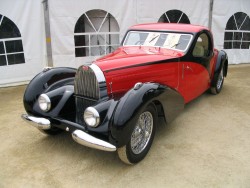
Examples of the most famous pre-war cars are:
1932 - 1939 Alvis Speed 20 and Speed 25 - the first cars with a fully synchronous transmission.
1932 - 1948 Ford V-8 (Model B) - With the introduction of the powerful regular V8 engine in Ford production vehicles, it sets new standards for engine performance and efficiency.
1934 - 1940 Bugatti Type 57 - a unique refined car for wealthy buyers.
1934 - 1956 Citroen Traction Avant - the first mass-produced front-wheel drive car built on a monocoque chassis.
1936 - 1955 MG-T Series - sports cars for young drivers at a very affordable price.
1938 - 2003 Volkswagen Beetle - Designed as a thrifty and inexpensive car, it has been manufactured for over 60 years with a minimal change in the basic appearance. It is the largest single-model production in history with over twenty million cars produced in several countries. The car finished fourth in the Car of the XX Century competition. The new version of this car as a reflection and style of the original model was produced in the XNUMXst century.
1936 - 1939 The Rolls-Royce Phantom III - with the V12 engine represents the pinnacle of pre-war engineering, as well as with technological advances not seen by most other manufacturers until the 1960s. It had superior performance and excellent workmanship.
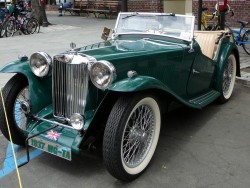
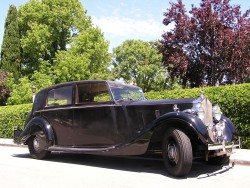
OLYMPUS DIGITAL CAMERA
The post-war era
Since World War II, automotive design has revolutionized the then accepted pontoon style. One of the first representatives of mass-produced cars was the Soviet GAZ-M20 Pobeda, the British Standard Vanguard, the American Studebaker Champion and Kaiser Special, the small Czech luxury Tatra T600 Tatraplan and the Italian Cisitalia 220 Sportcar. Automotive design and production finally emerged from the military orientation and other shadows of the war in 1949 when highly-compressed V8 engines and modern bodywork were introduced into the United States by General Motors brands Oldsmobile and Cadillac. The so-called 1951 unibody suspension for Ford Consul joined the Morris Minor in 1948 and 1949 and the Rover P4 in the wake of the UK car market. In Italy, Enco Ferrari begins production of the Ferrari 250, just as Lancia introduced the revolutionary Aurelia model with a V6 engine. During the 1950s, engine power and vehicle speed increased significantly, design became more integrated and newly designed cars were being driven around the world. Alec Issigonis' English Mini constructor and Fiat's 500 model are expanding across Europe, while a similar small so-called. Kei cars start assembling and driving in Japan for the first time. The legendary Volkswagen Beetle, having survived Hitler's Germany, has penetrated small auto markets in the South American continent. Cadillac Eldorado Brougham Ultra luxury sedans developed in the USA are reappearing after a long absence, as well as the so-called Grand Tourer (GT) cars like the Ferrari America model.
The market changed little in the 1960s when Detroit began to worry about foreign competition, when European manufacturers adopted increasingly better technology and Japan emerged as a truly car-manufacturing nation. General Motors, Chrysler and Ford have been trying to produce small cars similar to the GM-A-Body, but have had little success. Reduced car imports and re-badging flooded the US and UK as British Motor Corporation (BMC) consolidated the market. BMC's revolutionary small model Mini, first introduced in 1959, has had excellent sales results worldwide. The mini's were sold under the names Austin and Morris until the Mini became a brand in 1969. The trend of corporate consolidation of the automotive industry and the market has reached Italy through manufacturers such as Maserati, Ferrari and Lancia, which have been acquired by larger companies. By the end of the decade, the number of car brands was significantly reduced. In the US, performance is becoming a major focus of marketing, as exemplified by the so-called Pony and Muscle cars. In 1964, the glamorous Ford Mustang appears. In 1967, Chevrolet rolled out the Camaro and announced that it would compete with the Mustang. However, everything changed in 1973 due to the outbreak of the oil crisis, the implementation of rules on car exhaust emissions, the emergence of Japanese and European exports, and the stagnation of innovation, which caused all the chaos in the American auto industry. Although somewhat ironically large, the sedans had their big comeback in the years between energy crises, as Cadillac and Lincoln had their best sales years ever in the late 1970s. Modest performance cars from BMW, Toyota, Nissan take the place of big-car cars from the US and Italy. Between smaller vehicles, large station wagons and new trends in car design in the later years of the twentieth century, widespread so-called. Station Wagon (estate, break, van, universal) cars and non-commercial comfortable four-wheel drive vehicles, so called Off-road vehicles.
On the technology front, the widespread use at the time was the widespread use of independent suspension and the widespread use of fuel injection into the engine, as well as a growing focus on safety in car design. The latest technologies in the 1960s featured the NSU model with a Wankel engine, gas turbines and turbo engines. Of these, only the latest turbo technology patented by General Motors, popularized by BMW and SAAB, has been widely used. Mazda has had a lot of success with its so-called. A rotary engine that has, however, gained a reputation as an air pollutant and a complicated maintenance engine. Other Wankel licensed manufacturers including Mercedes-Benz and General Motors never put their engines into production after the 1973 oil crisis. The Rover and Chrysler companies experimentally produced gas-turbine cars, but without much sales success. By the end of the twentieth century and later, the American Big Three (GM, Ford, Chrysler) had partially lost their leading position as automakers, Japan becoming the world leader in car manufacturing while mass production of cars began in many Asian, Eastern European and other emerging countries in the world.
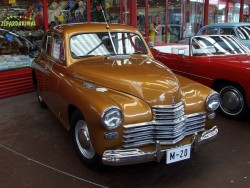
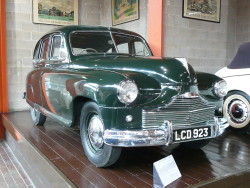

Notable examples of post-war cars are:
1946 - 1958 GAZ-M20 Victory - Soviet mass-produced car with pontoon design.
1947 - 1958 Standard Vanguard - British heavy duty car with full pontoon design.
1948 - 1971 Morris Minor - a popular and typical early post-war automobile exported worldwide.
1953 - 1971 Chevrolet Bel Air and 1953 - 2002 Cadillac Eldorado Brougham - the first post-war generations of people were the bright representatives of the golden age of American car tail design.
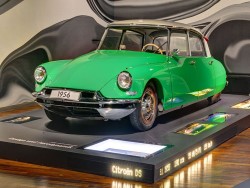
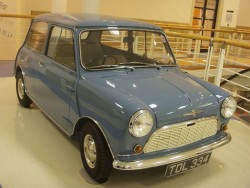
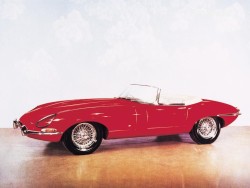
1955 - 1976 Citroen DS - unique and unusual representative with unusual hydropneumatic design. This car finished third in the Car of the XX Century competition.
1959 - 2000 Mini - This essentially small car has lasted four decades and remains one of the most famous cars of all time. The car won second place in the Car of the XX Century competition. The car has its own restyled new variant in the XNUMXst century.
1961 - 1975 Jaguar E-Type - The E-type celebrated Jaguar on the track and in showrooms and was the standard for design and innovation in the 1960s.
1963 - 1989 Porsche 911 - a great expensive little sports car to celebrate this company. The car won fifth place in the Car of the XX Century competition, and the model today has successors of similar design.
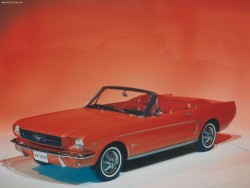
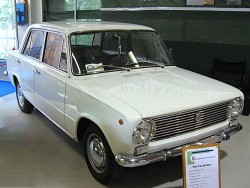
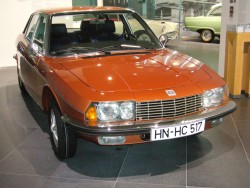
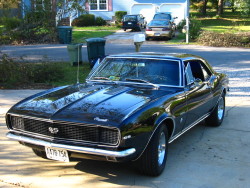
1964 - present Ford Mustang - so called A pony car that became one of the best-selling and favorite collector cars of the time.
1966 - 1974 Fiat 124 - an Italian car that has been manufactured under license in many other countries including the Soviet Union, where as a Vaz-2101 model, it launched a massive automation of the country.
1967 - 1977 The NSU Ro 80 - the basic wedge profile of this design is much imitated over the coming decades unlike its technical innovation, the rotary engine.
- 1967 - 2002 Chevrolet Camaro - so-called A pony car presented by General Motors to compete with the Ford Mustang.
- 1969 - 1978 The Datsun 240Z - one of the first Japanese sports cars to become a hit in the US - paved the way for future Japanese forces in the automotive industry. It is an affordable and well-made car that has had great success both on the track and with customers.
The modern age
The modern age is usually defined as the last 25 years before the current year, ie. 2012. godine. However, there are some technical things and aspects of modern design that differentiate modern cars from models of the past. The modern age has become one of the era of greatest standardization, platform sharing and computer aided design. Some particularly notable shifts in the modern age of motoring concern the front-wheel drive and all-wheel drive, the increasing use of diesel engines and the ubiquity of the fuel injection system. Although all these achievements were attempted in earlier epochs, they dominate the market today, so it is easy to predict their significance. Almost all modern passenger cars that have front-wheel drive with the so-called monocoque / unibody designs have transversely mounted motors, though this design was considered radical in the 1960s. Body styles have also changed. The three basic types are compact, sedan and sports car. They dominate today's market as well as relatively new concepts. All models originally emphasized practicality, but have mutated into heavily powered luxury Crossover SUVs, sports caravans and dual-stage MPVs. The rise of delivery trucks in the United States and off-road vehicles around the world has changed the face of motoring, with these vehicles virtually holding more than half of the global car market. Also noteworthy is the appearance of single-stage MPVs (smaller non-commercial passenger minivans), the first of which was the French Renault Scenic and in the US Pontiac Trans Sport. The modern age has led to a rapidly growing need to reduce fuel consumption and engine efficiency. When the oil crisis in the 1970s caused major problems in the auto industry, computerized engine management systems were adopted and power began to increase rapidly. In the 1980s, powerful sports cars could produce 200 horsepower, and after only 20 years, average passenger cars have the same powerful engines with excellent performance, although there are models that offer three times the power.
Since 2009, China has become an absolute leader in the production of cars with annual production larger than the US, Japan and Europe. In addition to the large growth in car production in Asian and other countries, new joint contracts and their occasional terminations with transnational corporations and transnational joint car platform manufacturing groups have become widespread in practice. Since the end of the twentieth century, several award-winning cars and trucks of different classes, manufacturers and from different countries have become very famous, such as vehicles that have won European Car of the Year, Car of the Year Japan, North American Car of the Year, World Car of the Year, Truck of the Year and International Car of the Year. Also, at the Car of the Century competition held in the US, the Ford Model T was named the most influential car of the XNUMXth century.
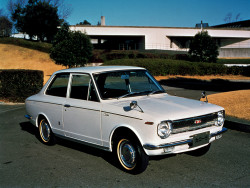
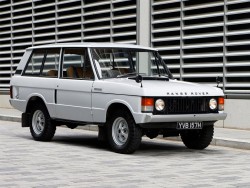
Leading examples of modern cars are:
1966 - Today Toyota Corolla - a simple little Japanese car that has become one of the best-selling cars of all time.
1970 - today Range Rover - the first true combination of luxury and all-wheel drive, the first original SUV. The popularity of the original Classic Range Rover was incredible until the new model came out in 1994.
1973 - Today, the Mercedes-Benz S-Class - Electronic Anti-Lock Braking System, airbags, pre-tensioner seat belts and Electronic Traction Control System - all made their S-Class debut. These systems later became standard throughout the automotive world.
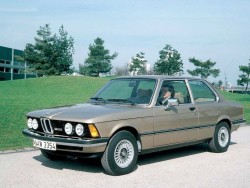

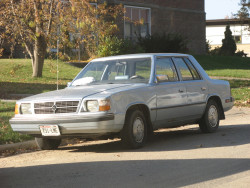
1975 - today The BMW Series 3 - this series was selected by various auto magazines on the annual list of the top ten 17 times, which is the longest period of stay on such lists.
1977 - Today Honda Accord saloon / sedan - This Japanese sedan became the most popular car in the United States in 1990 and set the parameters for future new Asian sedans.
1981 - 1989 Dodge Aries and Plymouth Reliant K-cars has been preserved by Chrysler as a major manufacturer. These models were some of the first successful American front-drive cars and thrifty compact cars.
1983 - Today's Chrysler Minivan - The boxy design of the Minivan almost pushed the caravans off the market and hinted at the current look of the crossover SUVs.
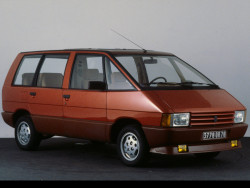
1984 - today Renault Espace - the first mass-produced single-volume car in the non-commercial MPV class.
1986 - Today Ford Taurus - This mid-range sedan with front-wheel drive and modern computer design dominated the American market in the late 1980s.
1989 - 1999 Pontiac Trans Sport - was one of the first so-called One box designed cars.
1997 - Today Toyota Prius - Launched on the Japanese market in September 2010, has reached worldwide sales of 2 million units, becoming the most legendary hybrid electric vehicle in the world.
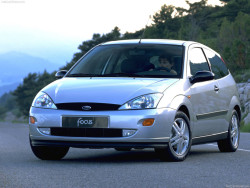
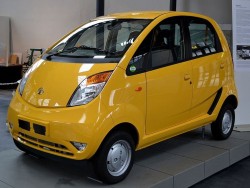
1998 - Today Ford Focus - one of the most popular hatchback cars worldwide which is also one of the best selling Ford brand cars in the world.
2008 - Today Tata Nano - The Nano is the cheapest production car (priced at $ 2200) with a rear-mounted engine and four seats. It is a passenger city car made by Indian company Tata Motors and intended primarily for the Indian market.
2010 - Today Nissan Leaf and Chevrolet Volt - a fully electric car and plug-in hybrid launched in the US and Japan markets in December 2010, becoming the first mass-produced vehicles of its kind.
The potential future of automotive technology includes numerous alternative energy sources and materials that have been developed to make cars more energy efficient with reduced exhaust emissions. Cars will certainly evolve in many different ways. With the rise in fuel prices, the future of cars is now leaning toward fuel economy, energy savings, hybrid vehicles, electric vehicles (batteries) and fuel cell vehicles. One of the big problems in developing cleaner and more energy efficient cars is the choice of motor fuel. A number of alternative fuel vehicles have been proposed including electric cars, hydrogen cars, compressed air cars and liquid nitrogen cars. Ordinary cars operate at about 15 percent of total efficiency. The rest of the energy is wasted on the engine idling and idling. So the potential to improve fuel efficiency with advanced technologies is enormous. Various technologies have been developed and used to increase energy efficiency in conventional cars, leading to energy savings.
Regenerative braking technology saves braking energy and saves it for later use or as backup energy. The energy thus obtained is used to restore the battery energy of the hybrid vehicle. The German BMW Turbosteamer concept uses energy from the exhaust of a traditional internal combustion engine to start a steam engine that boosts energy efficiency by 15 percent.
Hybrid compressed air injects highly compressed air into the engine and reduces fuel consumption by 30 percent. The use of waste heat from power plants as useful mechanical energy for various forms of operation is also considered. Using Computational Fluid Dynamics methods in the vehicle design phase can produce vehicles that use significantly less energy to develop speed. These are great examples of the recent Volkswagen 1-liter Car and Aptera 2 Series concepts that have emerged recently.
Materials such as duraluminum, fiberglass, carbon fiber and carbon nanotubes can completely replace all the steel in a car with the potential to reduce weight and increase power. Aluminum, carbon fiber and fiberglass are increasingly used in cars today. Plastic and special foam for making the car shell can provide additional safety for pedestrians and other road users in the event of a collision.
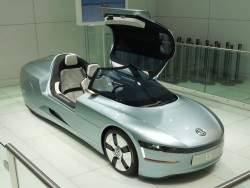
Retrieved from: www.netauto.rs
Recommendation of similar texts:

Hi there, I am Mladen and I am an auto enthusiast. I started this blog years ago to help like minded people share information about latest cars, car servicing ideas, used car info, exotic cars, and auto technology. You will find helpful articles and videos on a wide variety of cars - Audi, Mercedes, Toyota, Porsche, Volvo, BMW and much more. Ping us if you have anything cool to share on latest cars or on how to make older cars more efficient, or just want to say hi!

